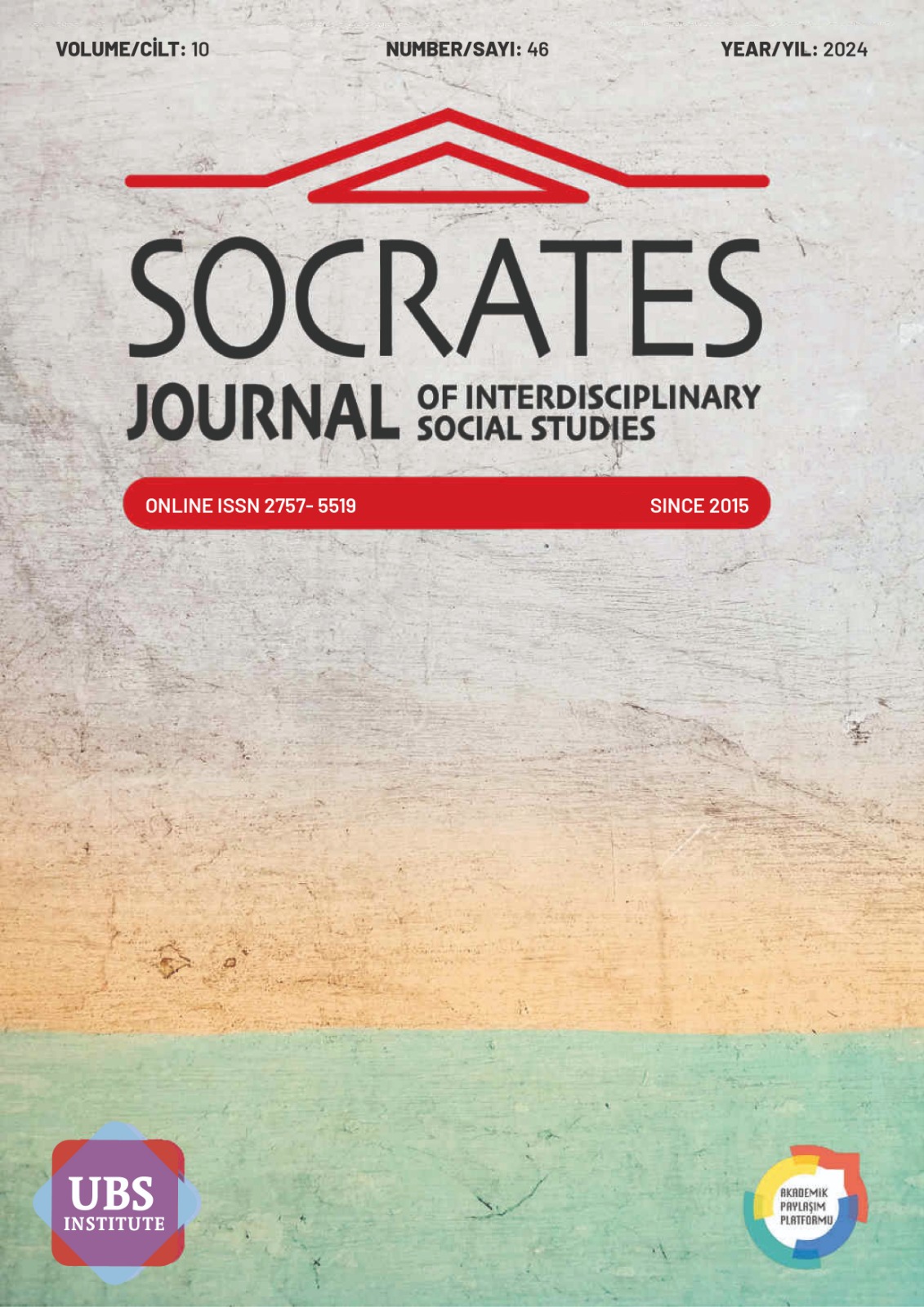YAZMACILIK VE GÜNCEL SANAT YORUMLARI
BLOCK PRINTING AND CONTEMPORARY INTERPRETATION
DOI:
https://doi.org/10.5281/zenodo.13984302Anahtar Kelimeler:
Yazmacılık, tekstil sanatı, baskı resim, güncel sanat, kültürel mirasÖzet
Tokat yazmacılığı, geleneksel Türk halk sanatlarının önemli bir parçası olup, köklü geçmişiyle kültürel mirasımızda önemli bir yer tutmaktadır. Günümüzde bu geleneksel zanaat, güncel sanat dünyasında da kendine yer bulmaktadır. Bu bağlamda, sanatçı ve akademisyen Müge Akçakoca’nın üretimleri, Tokat yazmacılığının güncel yorumlarla nasıl dönüştüğünü ve zenginleştiğini gösteren önemli örnekler sunmaktadır. Akçakoca, Tokat yazmacılığını çağdaş bakış açısıyla ele alarak, geleneksel teknikleri sanatın dinamikleriyle birleştirmiştir. Kendi tasarladığı özgün motif ve kalıplar, geleneksel desenleri yeni formlarla birleştirerek, bu zanaatın sınırlarını genişletmiştir. Akçakoca'nın yaklaşımı, yazmacılığın sadece tekstil değil, aynı zamanda baskı resim sanatıyla da ilişkisini yeniden vurgular. Sanatçının üretimlerinde geleneksel motiflerin yerini, sanatçının vegan yaşam felsefesini yansıtan ve hayvan haklarını savunan imgeler almaktadır. Bu yaklaşımla sanatçı, yalnızca sanatsal bir üretim gerçekleştirmekle kalmayıp, aynı zamanda toplumsal bir noktaya değinmekte ve sanatını, hayvan hakları hareketinin bir aracı olarak kullanmaktadır. Sanatçının bu bağlamda oluşturduğu “HİÇBİRŞEY” başlığında 2018 ve “HİÇBİRYER” başlığında 2019 yıllarında açmış olduğu iki kişisel sergisi bulunmaktadır. Bu kişisel sergiler daha sonra aynı başlıkla 2019 ve 2022 Didim Vegfest’te ikinci defa sergilenmiştir. Kültürel mirasımız yazmacılığın güncel sanat anlamında yorumlarını içeren bu sergilerdeki üretimlerin eleştirel okumalarının yapıldığı bu araştırmada, geleneksel yazmacılık teknikleri ve baskı resim sanatının tekstil sanatıyla birleştiği noktalar ele alınmıştır. Bu araştırma, Müge Akçakoca’nın Tokat yazmacılığında kullanılan geleneksel teknikleri kendi sanat pratiğine güncel yorumlarla nasıl yansıttığını ve zanaatın güncel sanatta nasıl yeniden yorumlandığını ve zenginleştiğini ortaya koyacaktır.
Referanslar
Adıgüzel, S., Erdem, H., Daşkın, H. ve Türkcan, S.H. (2017). Somut Olmayan Kültürel Miras Tokat. Tokat: T.C. Tokat Valiliği İl Kültür ve Turizm Müdürlüğü Yayınları.
Braidotti, R. (2014). İnsan Sonrası. (Çev. Öznur Karakaş), 1.Baskı, İstanbul, Kolektif Kitap
Cronin, J. K., & Dobbie, H. (2023). Visual and contextual analysis. In Look closely: A critical introduction to visual culture. ECampusOntario. https://ecampusontario.pressbooks.pub/introtovisualculture/chapter/visual-and-contextual-analysis/
Daşkın, H. (2017). Tokat Yazmacılığı. Genişletilmiş 2. Baskı, Tokat: T.C. Tokat İl Kültür ve Turizm Müdürlüğü Yayınları.
Jerwood Visual Arts. (t.y.a). Thematic analysis in art. Art Education and Methodologies Glossary. https://jerwoodvisualarts.org/art-education-and-methodologies-glossary/thematic-analysis-in-art/ (Erişim tarihi: 4 Ağustos 2024).
Jerwood Visual Arts. (t.y.b.). Iconographic analysis. Art Education and Methodologies Glossary. https://jerwoodvisualarts.org/art-theory-glossary/iconology/ (Erişim tarihi: 4 Ağustos 2024)
Kaya, R. (1974). Türk Yazmacılık Sanatı (Tahta kalıpla kumaş baskısı). İstanbul:İş Bankası Kültür Yayınları.
Oğuz, M. Ö. (2013). Terim olarak somut olmayan kültürel miras. Milli Folklor, 25(100), 5-13.
Oğuz, M. Ö. (2007). UNESCO, kültür ve Türkiye. Millî Folklor, 73, 5-11.
UNESCO. (2003). Somut olmayan kültürel mirasın korunması sözleşmesi. https://ich.unesco.org/doc/src/00009-TR-PDF.pdf, 2 Eylül 2024
İndir
Yayınlanmış
Nasıl Atıf Yapılır
Sayı
Bölüm
Lisans
Telif Hakkı (c) 2024 Socrates Journal of Interdisciplinary Social Studies

Bu çalışma Creative Commons Attribution 4.0 International License ile lisanslanmıştır.


